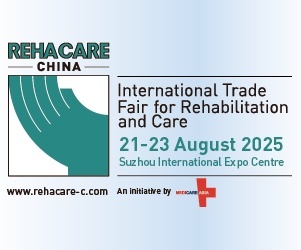Human beings have always boasted an unbelievable assortment of abilities, and yet the greatest ability they have ever possessed is that tendency to grow on a consistent basis. This, in particular, has allowed us to hit upon some huge milestones, with technology proving to be a significant member of the stated group. The reason why technology gets to enjoy such a high stature is largely centered upon its unique skill-set, which introduced us to all those possibilities that we couldn’t have imagined otherwise. Mind you, though, the whole runner was also, at the same time, inspired by how we applied the stated skills in a real-world setting. In fact, the latter component went on to have a huge say in conceiving a spectrum-wide presence for the creation, including a very well-planned appearance on our healthcare block. Technology’s link-up with healthcare was so perfect in every possible sense because it came right during sector’s fight against its own obsolete structure. Fortunately, this reality was successfully overhauled under the new regime, but even after going that far, the medtech concept will continue to produce all the right goods. The same has turned more and more apparent over the recent past, and a new FDA approval should only keep that trend alive.
The Food and Drug Administration has officially approved a Bluebird Bio’s gene therapy for cerebral adrenoleukodystrophy (CALD), making it the first ever approved therapy for the condition. Talk about CALD, it’s a type of neurodegenerative disorder that causes progressive and irreversible functional decline, and usually leads to death within five years. The disease is caused by genetic mutations that lead to the accumulation of very long-chain fatty acids in the brain, therefore eventually triggering degradation of myelin, the protective covering for nerve cells. This, in turn, goes on to create various other problems such as losing the ability to walk, communicate, see, and control muscle movements, among other complications. As for how Bluebird’s gene therapy, Skysona solves the problem, it uses patient’s own hematopoietic stem cells to engineer them in a lab. Here, a lentiviral vector is brought in to insert a functional copy of a key gene into the patient’s stem cells. After that, it’s a standard procedure, as the edited cells are infused back into the patient. The idea is, of course, to create a cell structure that produces enough protein for breaking down the very long chain fatty acids.
The company has already put the drug through a Phase 2/3 study and a Phase 3 trial, where they tested it on over 67 patients with early and active CALD. Notably, while the tests did show a positive trend, it also revealed some of the therapy’s shortcomings. For instance, Bluebird reported that three boys treated with Skysona developed myelodysplastic syndrome, an iteration of the bone marrow cancer. This will get FDA to put the therapy under a clinical hold in 2021. However, following some additional evaluation, the agency will lift the hold, allowing Skysona to finally hit the market.
“Children with CALD and their families have been at the heart of bluebird’s mission since the company was founded more than a decade ago,” said Andrew Obenshain, CEO of Bluebird Bio. “For the ALD community, this long-awaited approval represents significant hope and offers families a new option where, for many, there had been none. We are grateful to every individual who was involved in the development of Skysona and are committed to working with providers and payers to make this important treatment option available to patients and their families.”
As the first ever therapy to CALD, Skysona carries a sizeable price tag of $3 million.


















